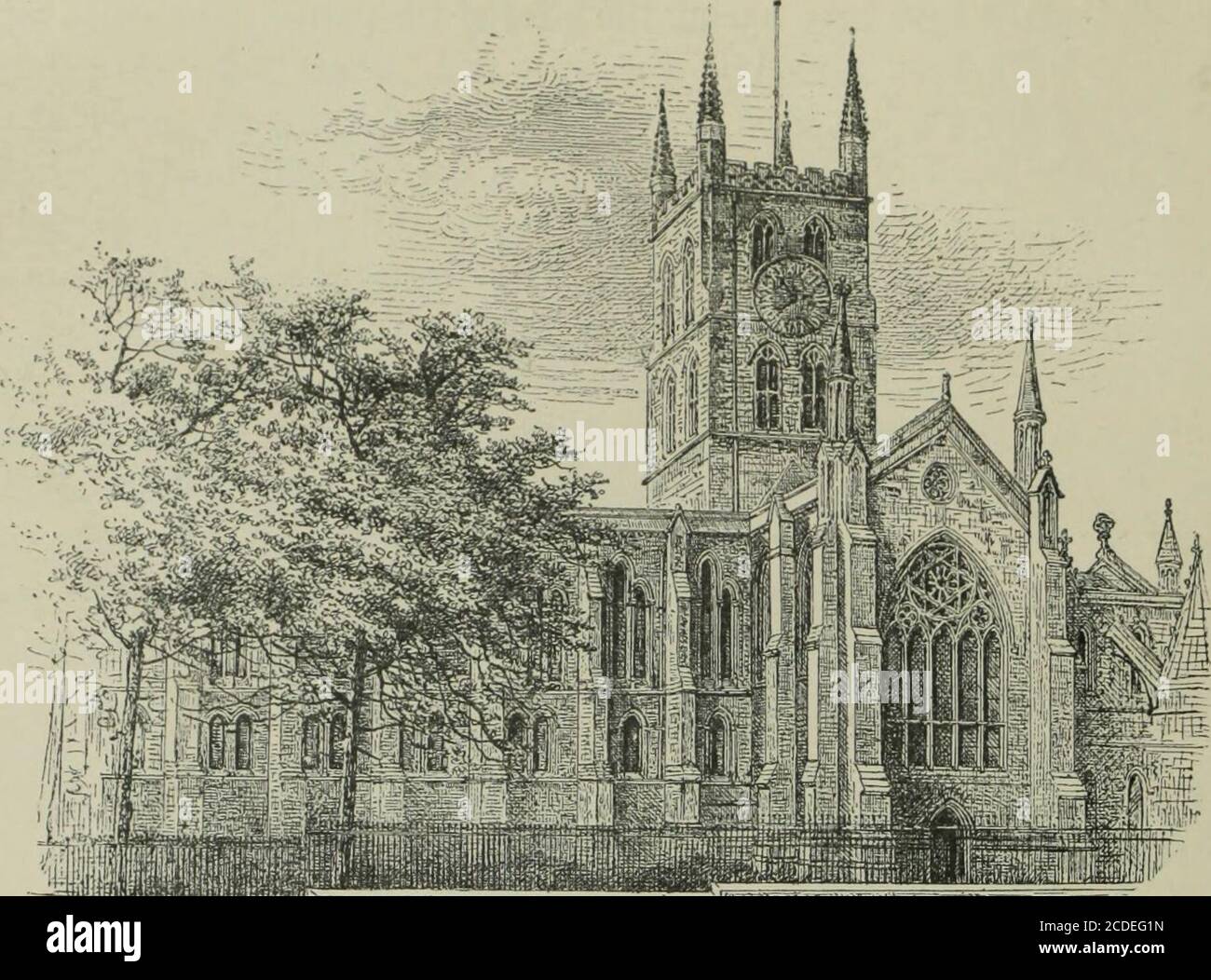. Cathedrals, abbeys and churches of England and Wales, descriptive, historical, pictorial . superseded thehistorical appellation of St. Mary Overy, by which it was known before theReformation. We may dismiss the tradition which was preserved by the last prior,Bartholomeo Linsted, that this building arose from the House of Sisters establishedby Mary, the daughter of a ferryman named Overy, or Overies, who had accu-mulated considerable wealth; for the name Overy, or Overey, is evidently derivedfrom over-eye, which means over the river bank, or over the Avater, eye or eyotbeing sometimes applied

Image details
Contributor:
Reading Room 2020 / Alamy Stock PhotoImage ID:
2CDEG1NFile size:
7.1 MB (478.3 KB Compressed download)Releases:
Model - no | Property - noDo I need a release?Dimensions:
1837 x 1360 px | 31.1 x 23 cm | 12.2 x 9.1 inches | 150dpiMore information:
This image is a public domain image, which means either that copyright has expired in the image or the copyright holder has waived their copyright. Alamy charges you a fee for access to the high resolution copy of the image.
This image could have imperfections as it’s either historical or reportage.
. Cathedrals, abbeys and churches of England and Wales, descriptive, historical, pictorial . superseded thehistorical appellation of St. Mary Overy, by which it was known before theReformation. We may dismiss the tradition which was preserved by the last prior, Bartholomeo Linsted, that this building arose from the House of Sisters establishedby Mary, the daughter of a ferryman named Overy, or Overies, who had accu-mulated considerable wealth; for the name Overy, or Overey, is evidently derivedfrom over-eye, which means over the river bank, or over the Avater, eye or eyotbeing sometimes applied not only to islands, but also to riverside lands, as Ber-munds-eye, and even Hacon-eye (or Hackney)—on the banks or shoals of the riverLea—a village said to be named after its former owner. It is true that there wasa house of Sisters on the bank-side, at or near the spot now occupied by St. 388 ABBEYS AND CHURCHES. [St. Baktholumewh Saaours Cliurcli, and that it was converted Into a college for priests. In 1106two Norman knights re-founded it as a canonry and priory of the Order of. ST. saviours, SOtTHAVAllK (bEFORT; RESTORATION). Augustin, and GifPord, Bishop of Winchester, built a cathedral church and palaceIn Winchester Yard. These perished in a great fire in 1212, and the church wasnot rebuilt till near the end of the fourteenth century, when Gower, the poet, who lived close by, contributed largely to the funds. In 1404 Cardinal Beaufortwas made Bishop of Winchester; and in 1406 the marriage of Edmund Holland, Earl of Kent, and Lucia, the daughter of the Lord of Milan, was celebratedhere. King Henry IV. giving away the bride at the church door. Eight yearsafterwards James I. of Scotland was married here to the niece of the greatCardinal—the daughter of the Earl of Beaufort—James having met the lady atWindsor while he was there as a prisoner. On the dissolution of religious housesin 1539, the black canons who held the priory were dispersed, but the prior, Linsted, obt